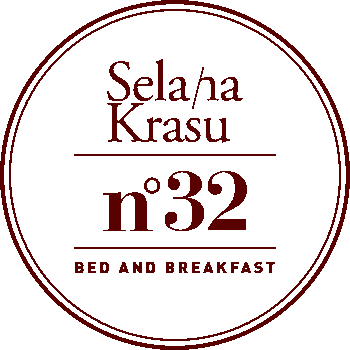Defended on the bank of the Natisone River, Cividale del Friuli has developed and maintained in the centuries a noble and stern print as one vital capital of strategic importance, marked and enriched by the passage of foreign people: Longobardi and Franchi.
We leave therefore to the discovery of the city crossing the Natisone river on the Bridge of the Devil .
Let’s go therefore to the discovery of the city beginning from the heart of the historical center, piazza del Duomo.
The look is immediately captured by the imposing Basilica of Santa Maria Assunta, whose luminous facade in white stone bears the clear signs of its moments of building. The building has been in fact constructed between XV and XVIII century, in Venetian Ghotic style. The majestic greateness of the inside offers many cues of admiration as the wonderful silver altar piece of Pilgrim II, placed on the altar, in silver sheet embossed with fired gilding, that is one of themasterpieces of the Italian jeweller’s art of the Middle Ages.
On the left aisle there is a great wooded Crucifix of the ‘ 200 and on the right one, there is the entrance of the Christian Museum, in which there are some precious masterpieces of the Longobard sculpture.
Noteworthy is the Baptistry of Callisto, an octagonal aedicule, adorned of wonderful sculptured decorations, that goes back to the half of VIII century and expecially, the altar of Ratchis, dedicated to the homonymous king of the Longobards, duke of Cividale: it is a parallelepiped in stone of the Carso richly decorated, considered one of the most important artistic manifestations of the high Middle Ages.
On the outside, in the public square of the Dome, there is the de Nordis Palace, constructed in late ‘400, and the imposing Palace of Provveditori Veneti, that encloses like a scenographical background the east side of the square. Builded in the 1565, on a plan of Palladium, it accommodates the Archaeological National Museum.
Taking Corso Mazzini, the main street of the town we will dip us in the ancient spirit of Cividale, till to Paul Deacon square, daily animated from the colorful market of costermongers. Surrounded by ancient and interesting buildings, with traces of fresco and windows emphasized in brickwork, is dedicated to the most famous longobard historian, the house of which, remembered from a tablet, was builded in that square.
Leaving the public square and going between the ways, passing next to the powerful walls of fortification that enclose the majestic doors of the town, one can meet churches that behind the stern facade in stone, often hide unexpected treasures: like a splendid altar piece of Palma il Giovane in Saint Pietro ai Volti or the ceiling entirely painted in fresco of the church of Saint Silvestro and Saint Valentino.
Worthy a visit is the purity of lines of Saint Francisco, located in the homonymous public square beside Pontotti-Brosadola Palace, whose outside does not leave to foresee the beauty of the inside. Built up in ‘700, between the great marble stairway and the splendid dance-hall preserves the best cycle of frescoes of Cividale that gives a marvellous view.
Coming back to the back of the Dome, the ancient air that is breathed tastes of longobard echo.
Not far away, behind the Church of Saint Giovanni Battista, there is Saint Biagio square, on which, beyond the small Church of Saint Biagio, it opens an hanging passage, between the charme of the green on walls, it leads to the most famous Tempietto Longobardo, higher expression of the high western Middle Ages. In front of the building of the VIII century, the wonderful landscape  on the Natisone River that flows between the deep and steep walls. Via Monastero Maggiore, with characteristic and irregular cobbled paving, leads directly to the Ipogeo Celtico, curious and interesting unit of artificial coves, dug out in differen levels and reachabled by steep and evocative flight of steps.
on the Natisone River that flows between the deep and steep walls. Via Monastero Maggiore, with characteristic and irregular cobbled paving, leads directly to the Ipogeo Celtico, curious and interesting unit of artificial coves, dug out in differen levels and reachabled by steep and evocative flight of steps.

